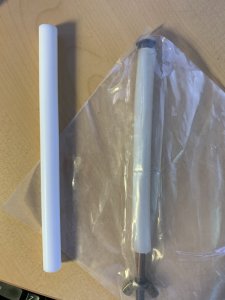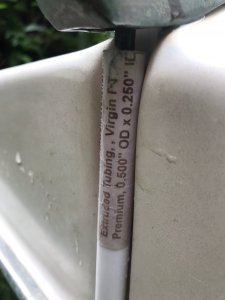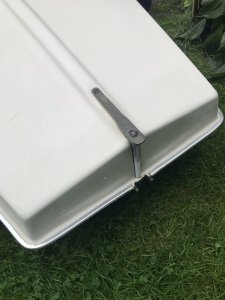I've now test-sailed my new-to-me 1962 Super Sailfish twice, and experienced first-hand the drawbacks of the old-style rudder, including its tendency to pop loose unexpectedly when pulled far over. So now I am thinking about adapting the rudder mount to accept the new-style rudder that I already have on my 1973 Minifish. This would require some adjustments to the tiller extension, but I was going to have to do that anyway, due to the idiosyncratic way I am sailing these boats. That in turn is illustrated by the following picture, which however has nothing to do with my immediate question, and is included here only for a cheap laugh:

So, my actual question is this. Is it feasible to do a quick and dirty external rudder upgrade without cutting into the hull, just by attaching a wood block to the transom using the existing external rudder hardware, and then bolting the U-shaped new-style rudder bracket to that wood block? Especially, I'm thinking that it should be possible to mount the bronze fitting from the old rudder to the front-side of this block in such a way that the existing pin-plus-clamp assembly on the stern could hold it well enough against the transom (if fully clamped down, so that it would not pop up).
So, my actual question is this. Is it feasible to do a quick and dirty external rudder upgrade without cutting into the hull, just by attaching a wood block to the transom using the existing external rudder hardware, and then bolting the U-shaped new-style rudder bracket to that wood block? Especially, I'm thinking that it should be possible to mount the bronze fitting from the old rudder to the front-side of this block in such a way that the existing pin-plus-clamp assembly on the stern could hold it well enough against the transom (if fully clamped down, so that it would not pop up).



